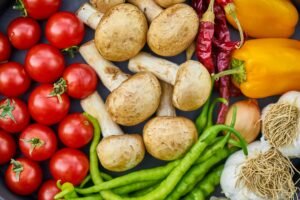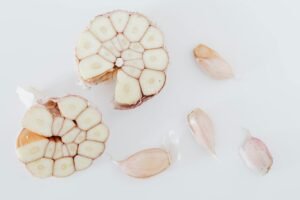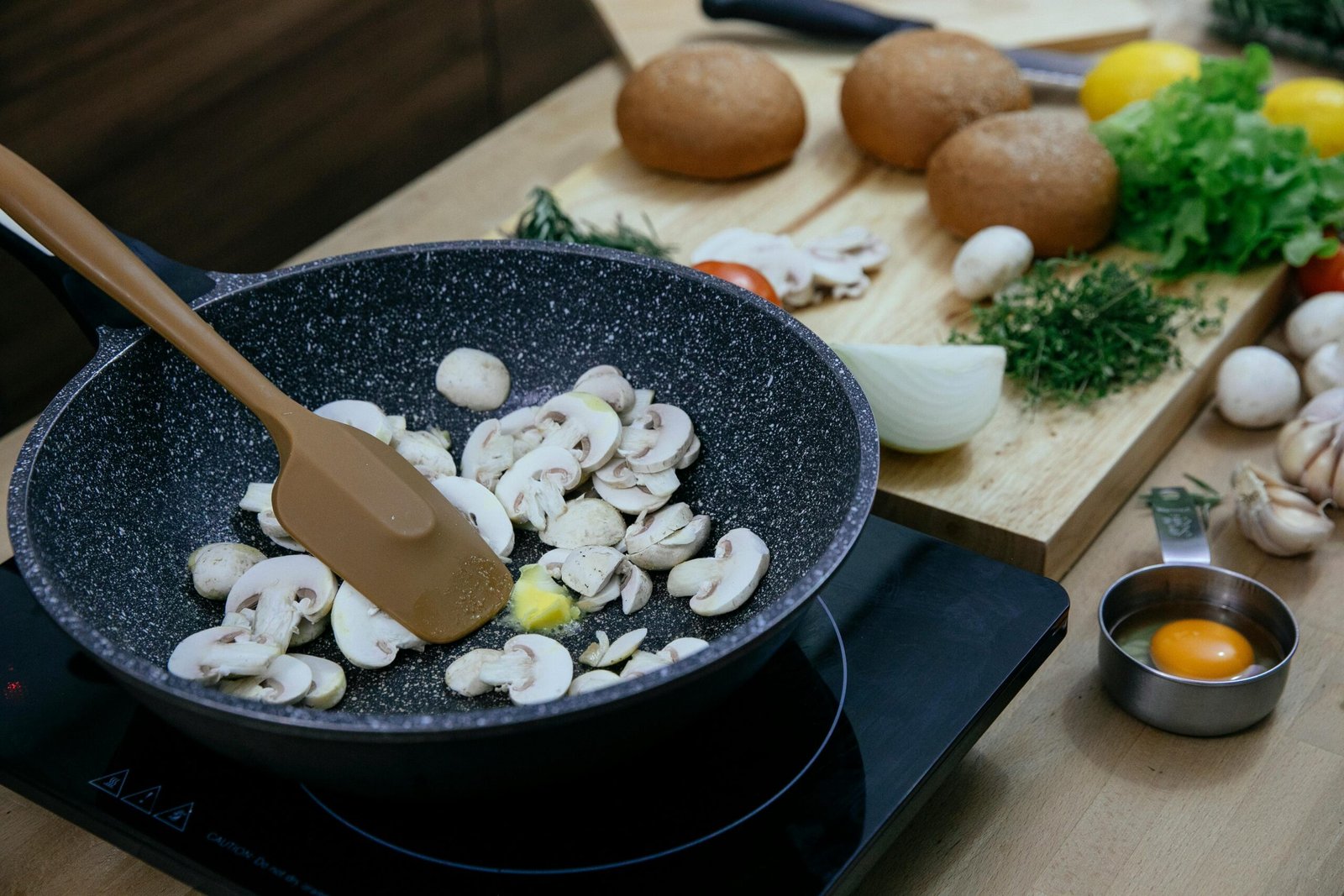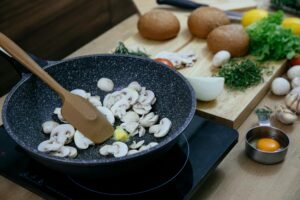How to Grow Garlic Indoors
Growing garlic indoors is a rewarding and convenient way to enjoy this versatile herb year-round. Whether you lack outdoor space or wish to have a fresh supply of garlic readily available, indoor garlic cultivation is a practical solution. Here, we provide a comprehensive guide to growing garlic indoors, from selecting the right variety to harvesting your aromatic bulbs.
Choosing the Right Garlic Variety
The first step to successfully growing garlic indoors is selecting the appropriate variety. There are two main types of garlic: hardneck and softneck.
Hardneck Garlic
Hardneck garlic is known for its strong flavor and the ability to produce garlic scapes. These scapes are edible flowering stems that add a delightful garlic flavor to dishes. Hardneck varieties are generally more suited for colder climates and have a shorter shelf life compared to softneck varieties.
Softneck Garlic
Softneck garlic, on the other hand, is more suitable for indoor growing due to its adaptability to warmer conditions and longer storage life. Popular softneck varieties include Silverskin and Artichoke garlic, which are known for their milder flavor and versatility in cooking.
Preparing for Planting
Before planting garlic indoors, it is essential to prepare the necessary materials and environment to ensure optimal growth.
Container Selection
Choose a container with good drainage, at least 8-12 inches deep to allow adequate root development. Containers made of clay, plastic, or wood are all suitable, but ensure there are drainage holes to prevent waterlogging.
Soil Preparation
Garlic thrives in well-draining, fertile soil. Use a high-quality potting mix enriched with organic matter. You can create a soil blend by mixing equal parts of peat moss, compost, and perlite. This mix ensures good aeration and retains enough moisture for the garlic to thrive.
Planting Garlic Indoors
Now that you have your container and soil ready, it’s time to plant the garlic cloves.
Clove Selection and Preparation
Select large, healthy cloves from a fresh bulb of garlic. Avoid using grocery store garlic as it may be treated with growth inhibitors. Separate the cloves, keeping the papery skin intact. Soak the cloves in water overnight to encourage quicker sprouting.
Planting Process
- Fill the Container: Fill your container with the prepared soil mix, leaving about an inch of space at the top.
- Plant the Cloves: Plant each clove with the pointed end facing up, about 2 inches deep and 4 inches apart. Ensure the cloves are covered with soil but not buried too deep.
- Watering: Water the soil thoroughly after planting to help settle it around the cloves. Maintain consistent moisture, but avoid overwatering as garlic dislikes soggy conditions.
Caring for Indoor Garlic
Proper care is crucial for the healthy growth of your indoor garlic.
Light Requirements
Garlic needs plenty of light to grow well. Place your container in a spot where it receives at least 6-8 hours of direct sunlight daily. If natural light is insufficient, consider using a grow light to supplement the lighting needs.
Temperature and Humidity
Garlic grows best in a cool environment with temperatures between 60-75°F (15-24°C). Avoid placing the container near heat sources or in overly humid areas, as this can lead to fungal issues.
Watering Schedule
Keep the soil consistently moist but not waterlogged. Water when the top inch of soil feels dry. Overwatering can cause root rot, while underwatering can hinder bulb development.
Fertilization
Feed your garlic plants with a balanced liquid fertilizer every 2-3 weeks during the growing season. A fertilizer high in nitrogen will promote leafy growth, essential for the bulb formation.
Harvesting Garlic Indoors
Indoor garlic typically takes 8-10 months to mature, but you can harvest garlic greens earlier if desired.
Harvesting Garlic Greens
If you prefer to harvest garlic greens, snip off the tops when they reach about 8-10 inches tall. These greens have a mild garlic flavor and can be used in salads, soups, and stir-fries.
Harvesting Garlic Bulbs
For full garlic bulbs, wait until the lower leaves turn yellow and begin to dry out. Gently loosen the soil and pull out the bulbs. Allow them to cure in a dry, well-ventilated area for 2-3 weeks to enhance their flavor and storage life.
Storing and Using Your Garlic
Proper storage is key to maintaining the quality of your harvested garlic.
Curing and Storage
After curing, trim the roots and cut the stems, leaving about an inch of the neck. Store the bulbs in a cool, dark, and dry place with good air circulation. Avoid refrigerating garlic as it can cause sprouting.
Culinary Uses
Garlic is a staple in many cuisines and can be used in various forms—raw, roasted, sautéed, or powdered. It adds depth and flavor to dishes like pasta, soups, sauces, and marinades.
Common Problems and Solutions
Pests and Diseases
While indoor garlic is less prone to pests, watch out for fungal diseases like white rot and mold. Ensure proper ventilation and avoid overwatering to prevent these issues.
Growth Issues
If your garlic shows signs of poor growth, such as yellowing leaves or stunted bulbs, check for soil drainage and nutrient levels. Adjust watering and fertilization practices as needed.

Maximizing Yield: Advanced Tips for Indoor Garlic Cultivation
To further enhance your indoor garlic growing experience and maximize your yield, consider the following advanced techniques and tips.
Companion Planting
Companion planting involves growing certain plants together to benefit one or both. Garlic is an excellent companion plant due to its natural pest-repellent properties. Consider planting garlic alongside herbs like basil, chives, or parsley. These herbs not only thrive in similar conditions but also help deter pests such as aphids and spider mites.
Rotation and Succession Planting
For continuous garlic harvests, practice rotation and succession planting. Start by planting a batch of garlic cloves every few weeks. This staggered approach ensures that you have fresh garlic greens and bulbs throughout the year. Additionally, rotating your garlic plants to different containers or sections of your indoor garden can help prevent soil depletion and reduce the risk of disease buildup.
Using Mulch for Better Growth
Mulching is a beneficial practice that can improve soil health and moisture retention. Apply a layer of organic mulch, such as straw or shredded leaves, around your garlic plants. This helps regulate soil temperature, retain moisture, and suppress weeds. Mulch also decomposes over time, adding valuable organic matter to the soil.
Garlic Scape Management
If you are growing hardneck garlic, managing garlic scapes is crucial. Scapes are the curly, flowering stems that appear as the garlic matures. While they are delicious and can be used in various recipes, removing them encourages the plant to focus its energy on bulb development. Cut the scapes when they are about 6-8 inches long and enjoy them in your culinary creations.
Ensuring Optimal Indoor Conditions
Maintaining ideal indoor conditions is key to the success of your garlic plants. Here are some additional tips:
- Air Circulation: Ensure good air circulation around your garlic plants to prevent fungal diseases. Use a small fan if necessary.
- Humidity Control: Keep the humidity levels moderate. Too much humidity can lead to mold growth, while too little can dry out the plants.
- Temperature Monitoring: Use a thermometer to monitor the temperature around your garlic plants. Avoid placing them in areas with drastic temperature fluctuations.
Organic Pest Control
Even though indoor garlic cultivation reduces the risk of pests, it’s wise to be prepared. Here are some organic pest control methods:
- Neem Oil: A natural pesticide that can deter pests like aphids and mites.
- Diatomaceous Earth: Sprinkle around the base of your plants to deter crawling insects.
- Garlic Spray: Make a garlic-based spray by blending garlic cloves with water and a few drops of dish soap. This can be used to repel pests from other indoor plants as well.
Using Artificial Lighting
If natural light is insufficient, especially during the shorter days of winter, consider using artificial lighting. Full-spectrum grow lights mimic natural sunlight and are ideal for growing garlic indoors. Position the lights about 6 inches above the plants and keep them on for 12-14 hours a day to ensure proper growth.
Nutrient Management
Proper nutrition is essential for robust garlic growth. Along with regular fertilization, consider the following:
- Compost Tea: Use compost tea to provide a nutrient boost. It enriches the soil with beneficial microorganisms and nutrients.
- Fish Emulsion: A liquid fertilizer rich in nitrogen, which is crucial for leafy growth.
Troubleshooting Common Issues
Yellowing Leaves
If your garlic leaves start yellowing, it may indicate a nutrient deficiency or overwatering. Check the soil moisture level and adjust your watering schedule. Supplement with a balanced fertilizer to address any nutrient gaps.
Slow Growth
Slow growth can be caused by insufficient light, poor soil quality, or inadequate watering. Ensure your garlic receives enough light and is planted in fertile, well-draining soil. Regularly monitor and adjust watering practices as needed.
Reaping the Benefits of Homegrown Garlic
Growing garlic indoors is not just about convenience; it’s also about enjoying the superior flavor and nutritional benefits of homegrown produce. Fresh garlic contains higher levels of allicin, a compound known for its health benefits, including boosting the immune system and reducing inflammation.
Experimenting with Different Garlic Varieties
Don’t hesitate to experiment with different garlic varieties to find the ones that best suit your taste and growing conditions. Some unique varieties to consider include:
- Elephant Garlic: Known for its large cloves and mild flavor.
- Creole Garlic: A softneck variety with a robust and spicy flavor.
- Black Garlic: Regular garlic fermented to develop a sweet, umami flavor.
Creative Uses for Garlic
Garlic is a versatile ingredient that can elevate many dishes. Beyond its culinary uses, garlic can be used to make:
- Garlic Infused Oil: Perfect for drizzling over salads or dipping bread.
- Garlic Butter: A delicious spread for toast or a topping for grilled meats.
- Pickled Garlic: A tangy and crunchy addition to charcuterie boards.
Final Thoughts
Indoor garlic cultivation is a fulfilling endeavor that brings the garden into your home, providing fresh garlic all year round. With the right techniques and care, you can enjoy bountiful harvests of this beloved herb, enriching your culinary creations and enhancing your overall well-being.

Conclusion
Growing garlic indoors is a rewarding experience that provides a continuous supply of fresh, flavorful bulbs. With the right variety, proper planting techniques, and diligent care, you can enjoy the benefits of homegrown garlic year-round.















